Plan and monitor your migration with activity maps
Without proper planning and careful monitoring, painful disruptions to your business-critical workflows can occur during application or service migrations. After the migration is complete, there can be lingering questions about what was missed. Dependencies on the old environment could result in continued disruptions, security issues, and poor performance.
To make sure migration issues don't take you by surprise, you can create an activity map in the ExtraHop system. Activity maps display real-time device connections and protocol usage based on network activity. Get visibility into production traffic flows so you can quickly identify dependencies between devices before you decommission hardware or restart services.
In this walkthrough, we'll show you how to create activity maps to assist with migrating database servers. With an activity map, we can answer the following questions:
- What are the database dependencies across my network?
- What are the cross-tier dependencies on these databases?
- What are the dependencies for a single database server?
- Are there active connections before I decommission the server?
- Is the new database operating as expected?
Prerequisites
- You must have access to an ExtraHop system or to the ExtraHop Demo.
- You must have a user account with personal, limited, or full write privileges.
- Familiarize yourself with Activity maps.
Create an activity map to find all database dependencies
First, we'll create an activity map that displays all of the devices in the network that are sending database requests to servers hosting database instances.
| Tip: | Click the global time selector in the upper left corner to change the time interval and see how database connections have changed over time. You can compare time intervals, which highlights the newest connections in green. |
Save the activity map
At this point, let's save this map for future reference. We can then continue to interact with and modify the map, and then load the original map at any time.
-
In the upper right corner of the page, click the Save
 icon.
icon.
- In the NAME section, type a name, such as Database Dependency Map.
- Skip the rest of the fields for now. You can always load your map to modify the description, permalink, and sharing options later.
- Click Save.
Find cross-tier dependencies
Let's add a step to the map to learn if there are dependencies from other web devices sending requests to our database clients, and then share our findings with other teams as needed.
Find all dependencies for a single database server
Now that we have the big picture about database dependencies across the network, we can start mapping dependencies for each server hosting a database instance, including server connections to DNS servers, NTP servers, and load balancers.
Double-check active connections before decommissioning the server
Migration day has arrived. Before we power down servers, let's double-check that all active connections to each server have been properly shut down. This step can minimize the risk of a service disruption.
Review connections with the new system
After the migration, we can create an activity map of database clients for each server with a database instance to confirm that the new system is working as expected. For example, you can compare new connections to old connections by reviewing PDF files of previous activity maps, or loading the Database Dependency Map and then adjusting the time interval.
Troubleshoot issues from an activity map
We're done! Activity maps can now help continuously monitor real-time traffic flows to migrated databases. If you find an issue, here are some ways you can troubleshoot and investigate data directly from an activity map.
| Potential Issue | How to Troubleshoot and Investigate |
|---|---|
| Investigate a suspicious device | If you find an unusual device connection that you want to investigate, click a circle for the suspicious device, and then select the device name from the Go to Device… section in the drop-down menu. You'll navigate to a protocol page that contains metrics observed for this device during that time interval. |
| Investigate high throughput connections | The larger the line that connects two devices, the higher number of bytes associated with this transaction. If you have a recordstore, you can investigate the transactions between devices. Click the line and then click Records. A record query opens and displays the entire transaction. |
| Display alert status for devices | If you have configured alerts, you can view which devices in the map have active alerts. Click the Display alert status checkbox in the lower left corner of the page. |


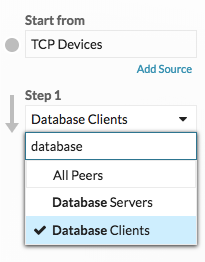
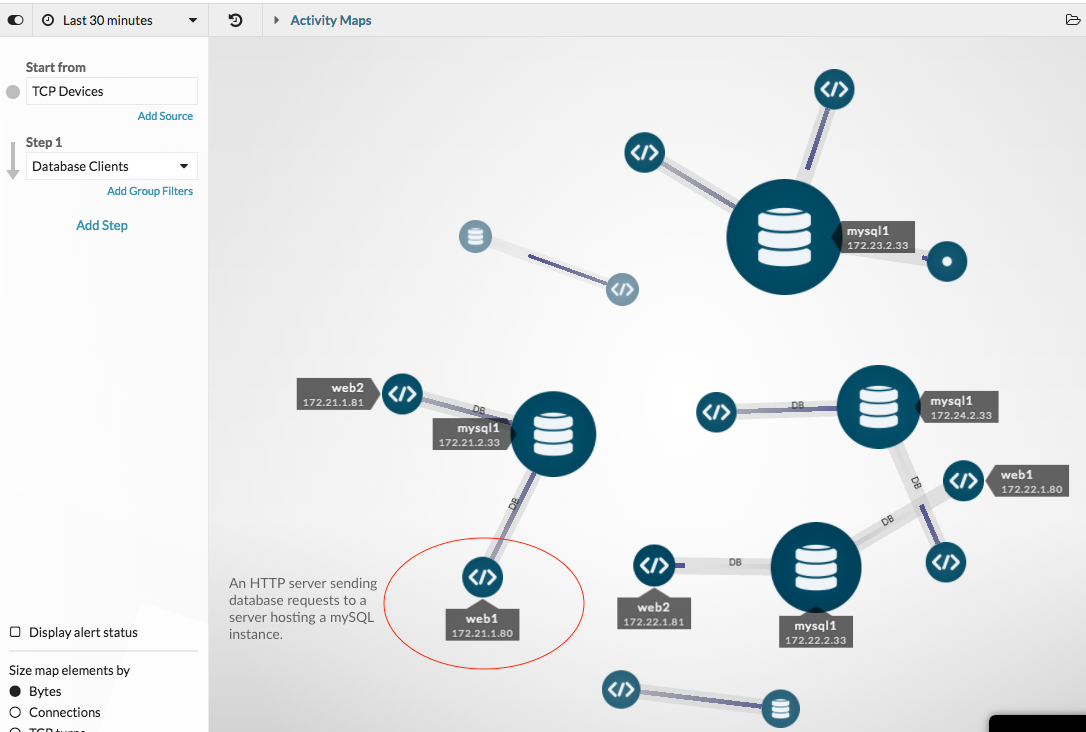
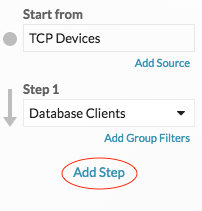
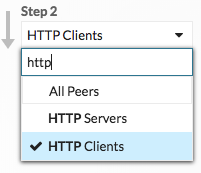
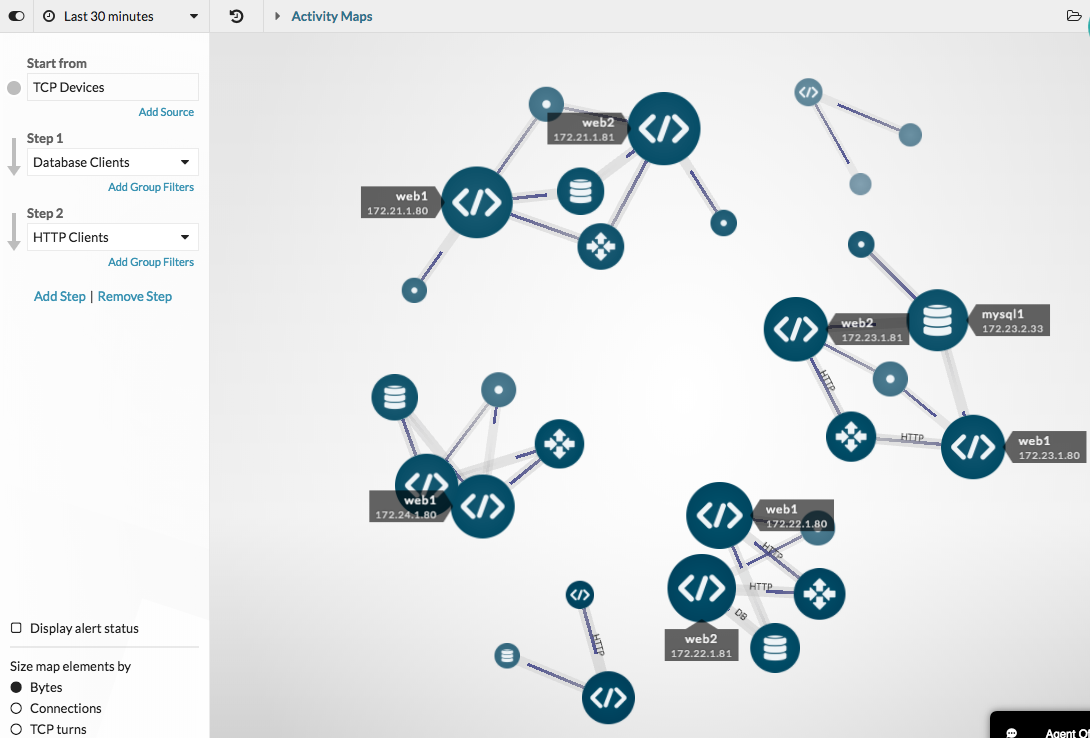
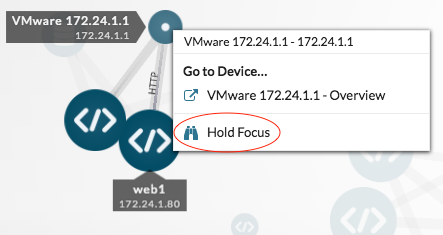
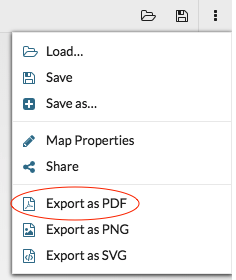


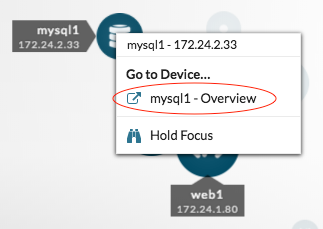

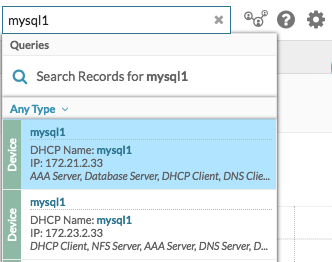
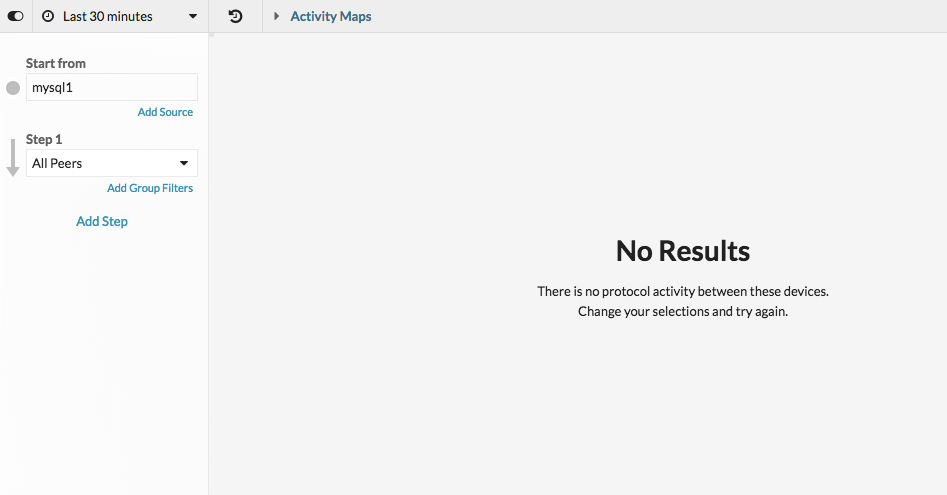
Thank you for your feedback. Can we contact you to ask follow up questions?